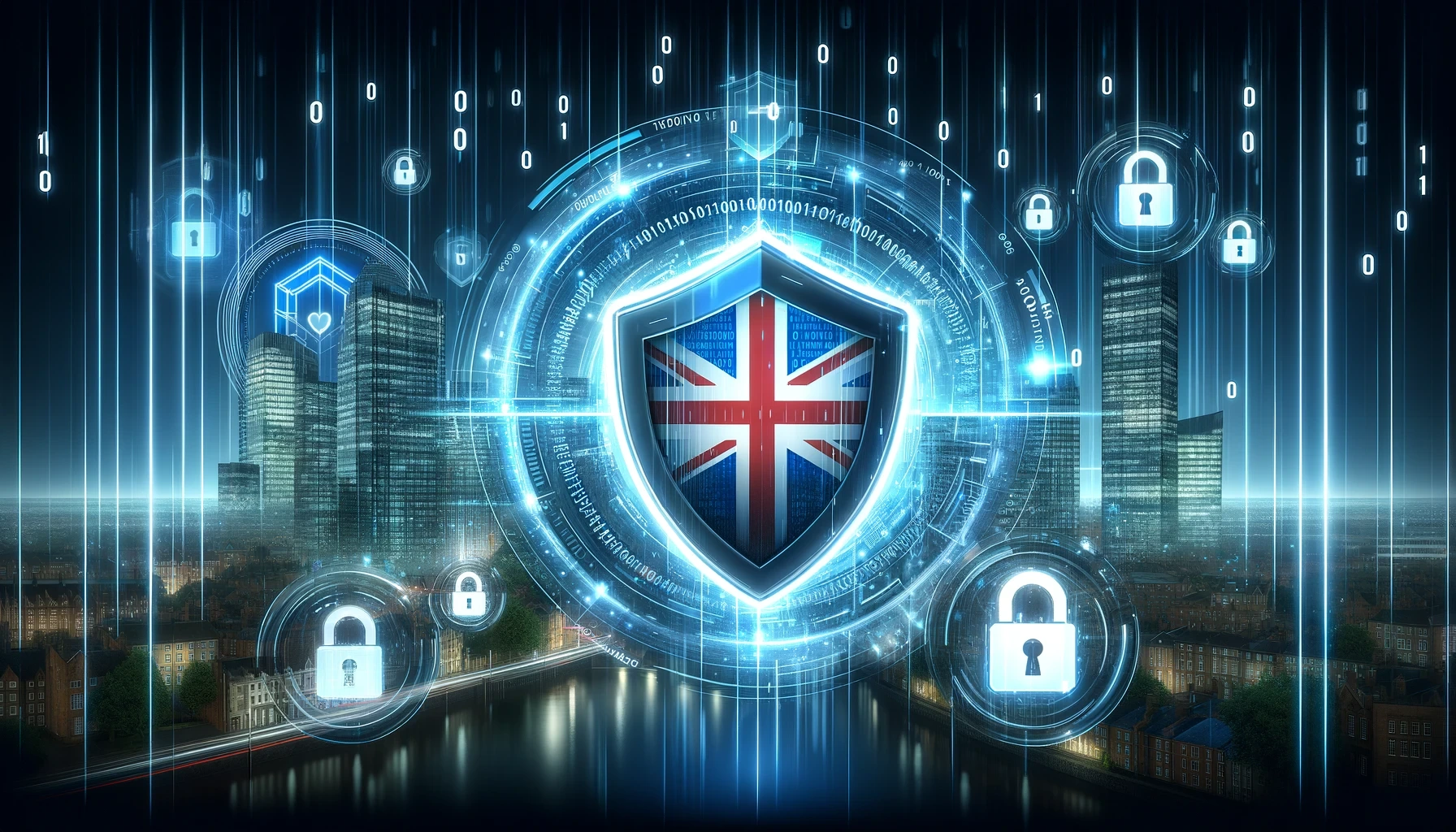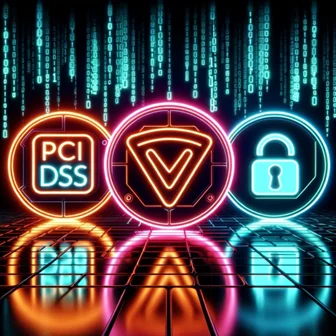Since the advent of widespread internet usage in the early 1990's, the landscape of cyber threats has evolved dramatically. Cyber-security compliance has become a crucial shield against these threats, mandating businesses to protect sensitive data rigorously.
In May 1998, the L0pht Heavy Industries hacker collective made a historic appearance before the US Congress, highlighting critical cyber-security vulnerabilities. This event marked a significant step towards the recognition of cyber-security as a global concern. However, it's important to note that computer security issues had been the subject of Congressional hearings prior to this, albeit in a more limited scope.

L0pht Hacking Group Congress Meeting
What is Cyber-security Compliance?
Cyber-security compliance typically means adhering to the standards, regulations and best practices in place to safeguard data and systems from malicious cyber threats. For UK businesses, this includes not only international standards but also local regulations such as the UK Data Protection Act 2018, which aligns with the General Data Protection Regulation (GDPR) and addresses specific UK needs post-Brexit.
Why Is Compliance Important in Cyber-security?
With the rise of business’s reliance on technologies, cyber-security compliance is introduced to ensure businesses that deal with customer data are properly safeguarded. Cybercriminals are on the rise to deploy different methods of exploiting systems and critical infrastructure. Being targeted by any type of malware such as ransomware could subject the company to financial and reputational damage on a huge scale. To prevent being a victim of such attacks, a much better approach is to be considered to safeguard and protect the information systems in place in any organisation.
While having an in-house security operation being run 24/7 annually could be costly, compliance could also be achieved through intensive penetration testing and auditing processes conducted by external vendors such as ProCheckUp. Through intensive compliance testing, the threat landscape of an organisation could be reduced to the very least by securing all potential vulnerabilities and weaknesses of the systems in place.
What are the types of data subject to cybersecurity compliance?
Data subjected to cyber-security compliance could be divided into 3 different categories:
1. Personal data: Any information such as name, identification number, address, etc that can be used to identify an individual. Personal data is subject to data protection laws and must be protected with appropriate security measures. In the UK, personal data protection is governed by the GDPR and the Data Protection Act 2018.
2. Confidential data: Any data meant to remain confidential, including trade secrets, proprietary data, and customer lists, should be safeguarded using suitable security measures like encryption to prevent unauthorized access.
3. Sensitive data: Any data capable of causing harm to an individual if accessed without authorization, exposing details like financial records, passwords, Social Security numbers, and medical records, must be shielded with the utmost security measures to prevent unauthorized access.

Which cybersecurity compliance framework is right for you?
1. General Data Protection Regulation (GDPR)
In 2018, the European Union introduced the GDPR (General Data Protection Regulation) as a comprehensive framework to safeguard the privacy and personal data of European Union citizens. This regulation extends its reach to any organization, regardless of its location, that handles the personal data of EU citizens. Non-compliance carries substantial penalties, potentially reaching up to 4% of a company's annual global revenue or €20 million, depending on which is greater. Since its enforcement in May 2018, Europe has seen over 160,000 reported data breaches, like the €1.2 billion fine against Meta, underlining the need for compliance beyond EU borders..GDPR has thus significantly impacted data protection and privacy practices across industries.
2. System and Organization Controls 2 (SOC2)
SOC2, designed by the American Institute of Certified Public Accountants (AICPA), outlines guidelines for safeguarding customer data against unauthorized access, security breaches, and potential vulnerabilities. This framework is structured around five key Trust Services Criteria: security, availability, processing integrity, confidentiality, and privacy. Over time, SOC2 has evolved into the prevailing benchmark that businesses across diverse sectors employ to instil confidence and boost their sales potential.
3. Health Insurance Portability and Accountability Act (HIPAA)
HIPAA, short for the Health Insurance Portability and Accountability Act, is a set of rules that pertain to healthcare entities responsible for managing protected health information (PHI). HIPAA mandates a range of measures encompassing physical, administrative, and technical safeguards, all aimed at preserving the confidentiality, integrity, and accessibility of PHI. Notably, between October 21, 2009, and December 31, 2022, approximately 5,150 data breaches were documented and reported to the U.S. Department of Health and Human Services Office for Civil Rights (OCR).
4. Payment Card Industry Data Security Standard (PCI DSS)
The Payment Card Industry Data Security Standard (PCI DSS) is a regulation that applies to organizations handling payment card information, such as credit card numbers. PCI DSS establishes requirements for safeguarding payment card data, including secure storage, transmission, and processing of such information. Non-compliance with PCI DSS can result in financial penalties, other corrective actions, and damage to the organization's reputation. Notably, PCI DSS compliance has increased by 167% since 2012. In a 2020 study by SecurityMetrics, it was found that only 43% of PCI DSS requirements were met at the time of a data breach.
5. National Institute of Standards and Technology (NIST)
NIST plays a pivotal role in fostering innovation, enhancing industry competitiveness, and improving our overall quality of life by advancing standards and technology. Under the NIST umbrella, NIST 800-53 serves as a Risk Management Framework, offering guidance on the management of information security systems. While it had its origins in the U.S. defence sector and among contractors, NIST practices have found their way into the strategies of numerous businesses. Furthermore, NIST 800-161 establishes standards for the assessment and reduction of risks associated with the supply chain of information and communications technology.
6. International Organization for Standardization (ISO 27001)
ISO 27001 outlines the prerequisites for creating, executing, sustaining, and continuously enhancing an Information Security Management System (ISMS). It mandates that organizations systematically assess their security risks by scrutinizing threats, vulnerabilities, and potential consequences. ISO 27001 aids organizations in safeguarding various forms of information, encompassing physical records, cloud-based data, and digital content. The adoption of ISO 27001 can boost an organization's ability to withstand cyberattacks, and organizations may opt to pursue certification in ISO 27001 to showcase their adherence to these standards.
7. Cyber Essentials
Cyber Essentials is a program endorsed by the UK government, specifically designed to ensure that businesses have sufficient protection against common cyberattacks. Think of it as a form of fundamental cyber hygiene, akin to practicing regular handwashing or dental care. While it is primarily tailored for smaller businesses lacking specialized security expertise, it should serve as the initial step in building a more comprehensive security strategy. It holds broad recognition and signifies an organization's commitment to cybersecurity, making it especially relevant if you're seeking to secure public sector contracts, where Cyber Essentials compliance may be a prerequisite.

5 Steps to Achieve Cyber Security Compliance
1. Understand the Regulatory Landscape
In order to attain cybersecurity compliance, organizations need to identify the relevant regulations that are applicable to their operations. This entails conducting a thorough examination of the pertinent legal frameworks and seeking guidance from legal and compliance experts to acquire a comprehensive grasp of the precise obligations they must fulfill.
2. Conduct a Risk Assessment
Organizations can perform a thorough risk assessment using techniques like penetration testing and vulnerability scanning. This involves examining both internal and external sources of cyber security threats and vulnerabilities. Penetration testing mimics cyber attacks to find system weaknesses proactively, while vulnerability scanning employs automated tools to identify known vulnerabilities in an organization's IT infrastructure.
3. Implement the Controls and Standards
Following the risk assessment, the next step is to implement security measures and regulations. This includes using technologies like firewalls, antivirus software, and encryption to protect data. The organization should also establish and enforce policies to ensure compliance. This is part of their comprehensive cyber security plan, aligning with regulatory standards and covering technical safeguards, policies, employee training, and incident response strategies.
4. Monitor and Audit the Compliance Program
Once the organization has put the controls and standards in action, it's essential to consistently oversee and assess the compliance program. This entails examining the organization's policies and procedures to confirm their adherence and proper documentation of security posture adjustments. Furthermore, periodic security posture audits should be conducted to verify compliance with established controls and standards.
5. Update the Compliance Program
Ultimately, the organization should routinely refresh its compliance program. As technology and regulations evolve, the organization should revise its compliance program to align with the most current requirements. Furthermore, regular assessments of the security posture should be conducted to confirm the organization's data is adequately safeguarded.
Conclusion
In summary, cyber-security compliance offers key benefits, including enhanced protection from cyber threats, reduced breach risks, improved customer trust, and stronger brand reputation. It's crucial for organizations to keep pace with the changing regulatory landscape and ensure data and system protection. For guidance in developing an effective compliance program, partnering with ProCheckUp, a UK-based firm with extensive experience in cyber-security, can simplify the process and provide expert support.





Categories